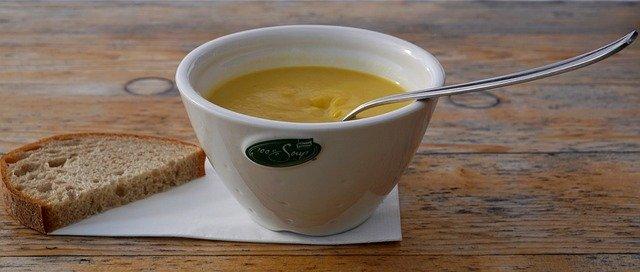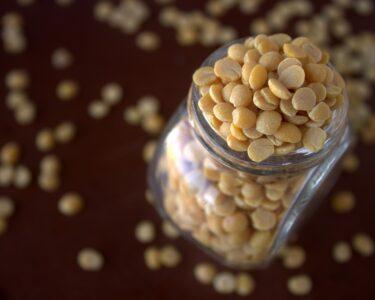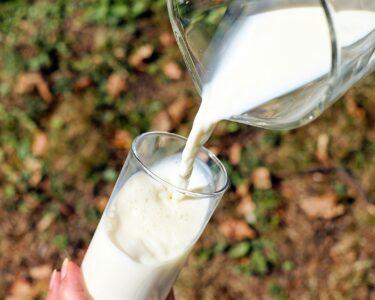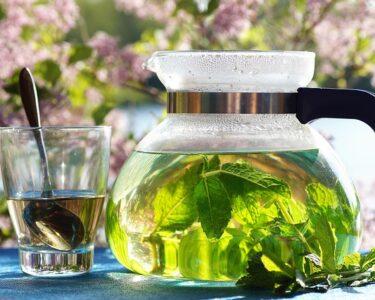In India and many other countries, a huge number of peoples are affected by Covid-19 infection each day. Since in most cases, patients remain in home isolation for 2 weeks, modification of their breakfast and snacks is essential for them.
The breakfast and snacks of COVID patients should be modified on consistency, quality, and quantity of foods as well as the frequency of intake. A modified breakfasts and snacks help-
- to reduce the severity of the symptoms.
- to avoid further complications and
- to ensure rapid recovery of patients.
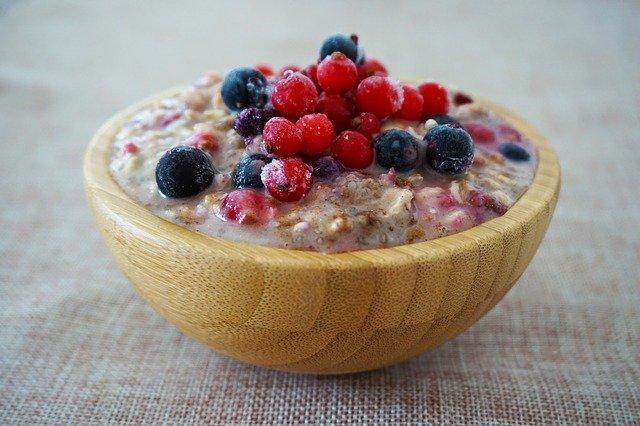
How to modify breakfast and snacks of COVID patients
The most common symptoms of COVID patients are throat problems (like sore throat, throat pain, difficulty in swallowing, etc.), moderate to high fever, digestive problems (poor digestive capacity, flatulence, diarrhea, etc.), loss of smell and taste, and poor appetite causing low food intake. The nutrient requirement increases during corona infection but food acceptability and food utilization decreases, which leads to further complications like dehydration, loss of weight, weakness, etc. To Cope up with the symptoms and to ensure rapid recovery of the patients, their diet should be modified in terms of quality, quantity and consistency.
Modification in Dietary consistency
Breakfasts and snacks should be semi-solid and soft in consistency which are –
- non-irritable,
- easily digestible
- easy-to-swallow
- easy to prepare
The nutrient intake of corona patients increases to cope up with the viral infection but they cannot take a large meal at a time due to poor appetite and loss of taste and smell of patients. To ensure adequate nutrient intake their menu should include small amounts of foods that are to be taken at frequent intervals. Breakfast and snacks should be split into halves which should be consumed 4 times. Consumption of processed foods and instant breakfast should be reduced.
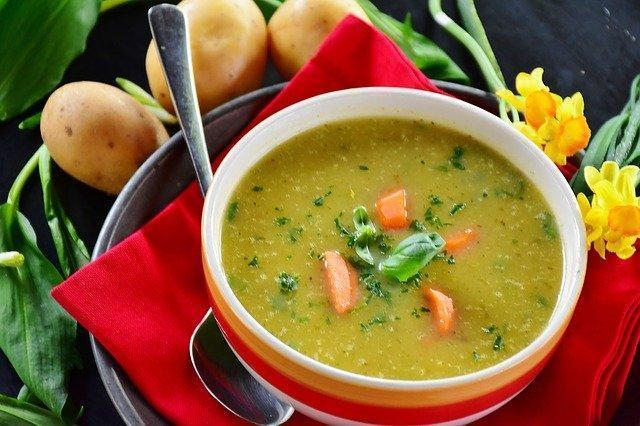
Modification in Frequency
The nutrient intake of corona patients increases to cope up with the viral infection but they cannot take a large meal at a time due to poor appetite and loss of taste and smell of patients. To ensure adequate nutrient intake their menu should include small amounts of foods which is to be taken at frequent intervals. Breakfast and snacks should be split into halves which should be consumed 4 times. Consumption of processed foods and instant breakfast should be reduced.
Modification in macro-nutrients content (carbohydrates, proteins and fat)
Breakfasts and snacks should be –
- High in protein
- Adequate in complex carbohydrate
- Low in sugar content
- Low in fat
- Low fiber
A combination of protein and carbohydrate rich foods should be utilised to prepare healthy breakfast and snacks items. A combination of cereal and pulses or cereals and milk is preferred.
Modification in micro-nutrients and phyto-nutrients nutrients.
Breakfasts and snacks should contain adequate amounts of immunity boosting nutrients like –
- Vitamin-C
- Vitamin-A or beta carotene
- Folic acid
- Zinc
- Selenium
- Antioxidants
- Probiotics
A liberal amount of soft fiber-rich fruits should be judiciously included which can supply all the needed vitamins and minerals. Intake of probiotics and antioxidant-rich foods should be increased.
Quick Breakfast and Snack Recipes for COVID Patient
Easy and Quick Breakfast Recipes
Here I like to suggest few breakfast recipes for the COVID-19 positive patients, preparation of which need less than 10 minutes from your busy morning schedule.
Recipe-1: Suji porridge or Semolina porridge
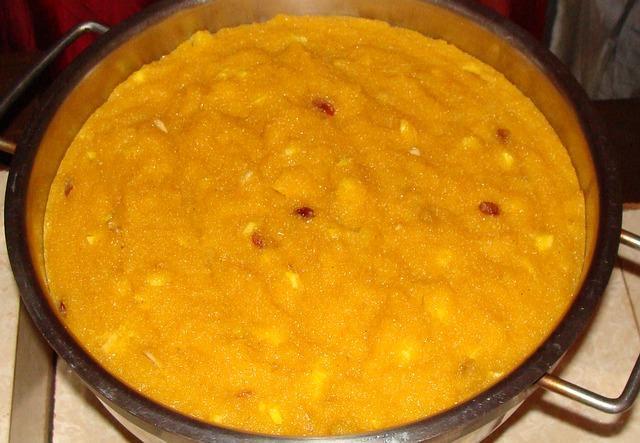
Preparation Time: 5 minutes
Ingredients Required
- Semolina: 1 tablespoon
- Milk: 1 Cup
- Sugar: 1 teaspoon
- Ghee: Half teaspoon
- Elaichi: 1
How to Prepare
- Heat the ghee in a tawa. Add semolina. Roast for a minute. Add sugar. Mix well.
- Now add boiled milk slowly with constant stirring to avoid gruel formation.
- When the mass becomes semi-solid, add elaichi powder and switch off the gas. Your breakfast is ready.
Recipe-2: Milk and murmura(muri) with banana

Preparation Time: 3 minutes
Ingredients Required
- Milk: 1 Cup
- Murmura (puffed rice): 1 Cup
- Sugar: 1 teaspoon
- Banana: 1
How to Prepare
Boil the milk.Soak murmura in a cup of boiled milk and add banana pieces to it.Serve the breakfast.
Recipe-3: Poha (Churah or rice flakes) with milk and mango
Preparation Time: 3 minutes
Ingredients Required
- Milk: 1 Cup
- Poha: 1 tablespoon
- Sugar: 1 teaspoon
- Mango (diced):
- ½ Cup
How to Prepare
Wash the rice flakes with water. Add boiled milk, sugar and mango pieces to rice flakes. Serve the breakfast.
Recipe-4: Popped rice with curd
Preparation Time: 2 minutes
Ingredients Required
- Popped rice (khoi): 1 Cup
- Curd: ½ Cup
- Sugar: 1 teaspoon
How to Prepare
Take popped rice, curd and sugar. Mix together. Serve the probiotic rich healthy breakfast.
Recipe-5: Oat Porridge with seasonal fruits
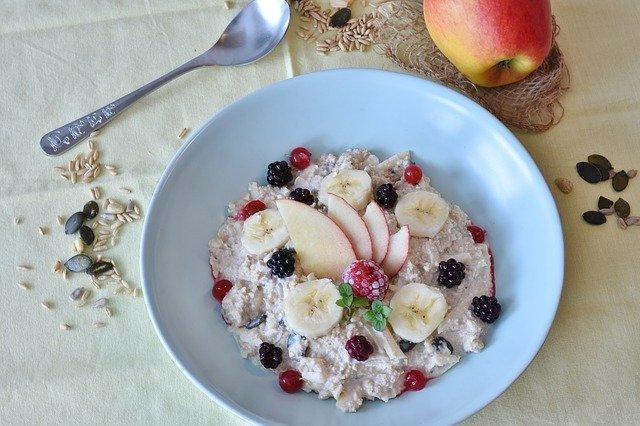
Preparation Time: 5 minutes
Ingredients Required
How to Prepare
Boil milk. Add oats and sugar. Cook for 2 minutes. Cool it slightly and add chopped fruits to it. You may add any types of fruit like mango, banana, apple, grapes, pomegranates etc.
Recipe-6: Dosa
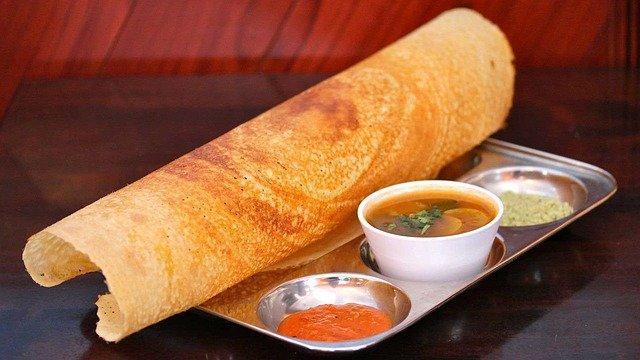
Soaking time:16 hours.
Cooking time: 3 minutes
Ingredients Required
- Boiled rice: 1 cup
- Urud dal: 1 cup
- Fenugreek (Methi) seeds: A pinch
- Salt: As per taste
- Oil: ½ teaspoon
How to Prepare
- Soak rice, dal and methi seeds together for 8-10 hours. Keep them at room temperature. Grind them into a smooth semi-solid paste and keep the paste for another 6 hours at room temperature.
- Take the required amount of batter, add a pinch of salt and mix well.
- Grease a tawa with oil, heat it, add a spoon of batter, spread in a thin layer, cook for a minute. Now turn it and cook the opposite side for few seconds. Your probiotic rich breakfast is ready to serve.
Recipe-7: Yoghurt rice flakes smoothie with Watermelon
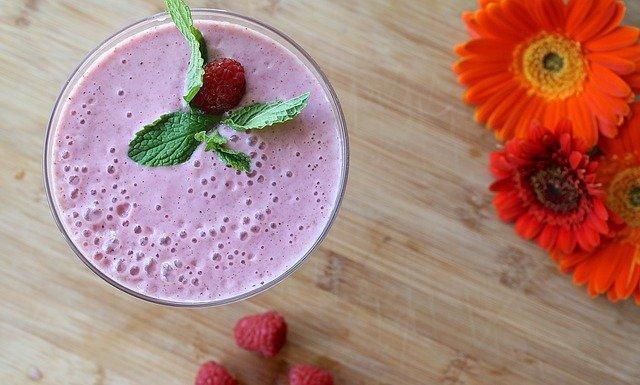
Preparation Time: 7 minutes
Ingredients Required
- Rice flakes: 4 teaspoons
- Watermelon (deseeded): 1 Cup
- Yoghurt: ½ Cup
- Sugar: 1 teaspoon
How to Prepare
Soak the rice flakes in yoghurt for 5 minutes.Add sugar and watermelon pieces to it and grind together into a smooth paste. Now your smoothie is ready to serve.
Recipe-8: Oat and milk shake with fruits and nuts

Preparation Time: 3 minutes
Ingredients Required
- Oats: 4 teaspoons
- Milk: 1 Cup
- Banana: 1
- Peanut butter: 1 teaspoon.
- Sugar: 1 teaspoon
How to Prepare
Take all the ingredients in a grinding jar and mix them. Your healthy shake is ready.
Easy and Quick Snack Recipes
Like breakfast, healthy snacks are also very importantfor corona patients. Here I like to suggest few snack recipes for those suffering from COVID-19 infection.
Recipe-9: Alu and a chotpota (Potato egg chotpota)
Preparation Time: 10 minutes
Ingredients Required
- Potato: 1
- Egg: 1
- Black salt: A pinch
- Black pepper: A pinch
- Chat masala: a pinch
- Lemon juice: Half teaspoon
How to Prepare
Boil the whole potato (with skin) and an egg with a little salt.Remove the skin of potato and egg and slice them into round pieces.Sprinkle little salt, pepper, chat masala and lemon juice over it and serve.
Recipe-10: Vegetable soup
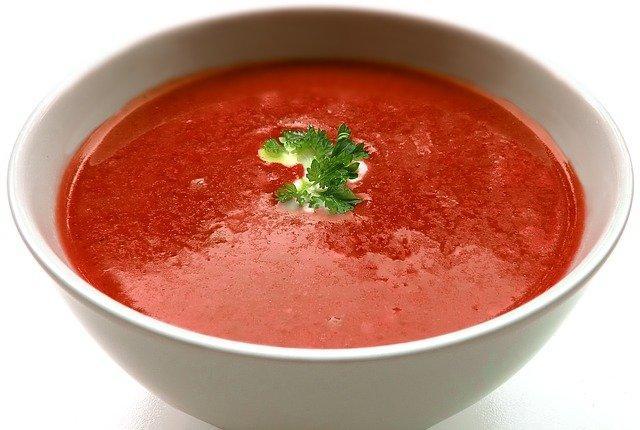
Preparation Time: 10 minutes
Ingredients Required
- Sweet corn: half
- Green peas: Few
- Carrot: 1 small
- Beans: 3-4
- Garlic:2-3 cloves
- Black salt: a pinch
- Butter: Half teaspoon
How to Prepare
Cut the vegetables into small pieces and boil them in a pressure cooker for 3 minutes.Heat a kodai, add little butter, fry chopped garlic and add the boiled vegetables, mix well. Your soup is ready. This is an antioxidant rich healthy dish.
Recipe-11: Baked potato with boiled peas
Preparation Time: 10 minutes
Ingredients Required
- Potato: 1
- Green peas: 1 handful
- Salt: As per taste
- Turmeric powder: A pinch
How to Prepare
Cut the whole potato into slices and marinate them with a pinch of salt and turmeric powder and bake them. In a little saucepan boil the green peas with a pinch of salt.Serve the baked potato with boiled green peas. It is a good snack for corona patients.
Recipe-12: Mango shake
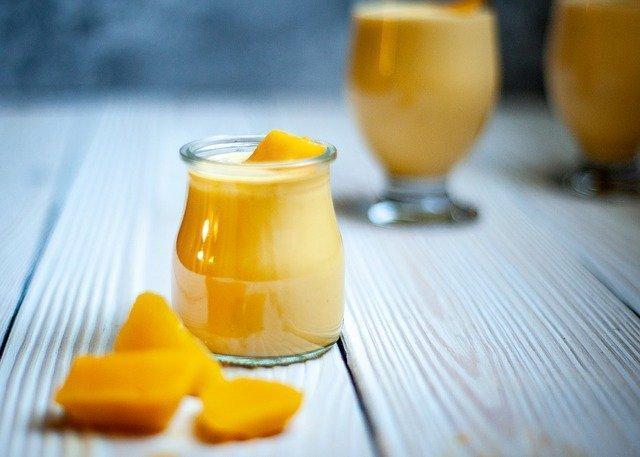
Preparation Time: 3 minutes
Ingredients Required
- Mango (pieces): ½ Cup
- Milk: 1 Cup
- Sugar: 1 teaspoon
How to Prepare
Take all the ingredients in a grinding jar and mix them together. Serve a glass of mango shake during snake time.
Recipe-13: Fruit and Nut shake
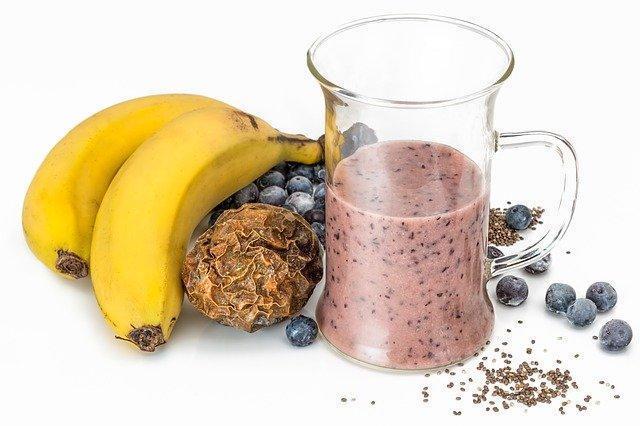
Preparation Time: 3 minutes
Ingredients Required
- Banana (pieces): ½ Cup
- Milk: 1 Cup
- Sugar: 1 teaspoon
- Peanut butter
How to Prepare
Mix all the ingredients together using a mixer or hand mixer. Serve the freshly prepared banana shake.
Recipe-14: Badam milk
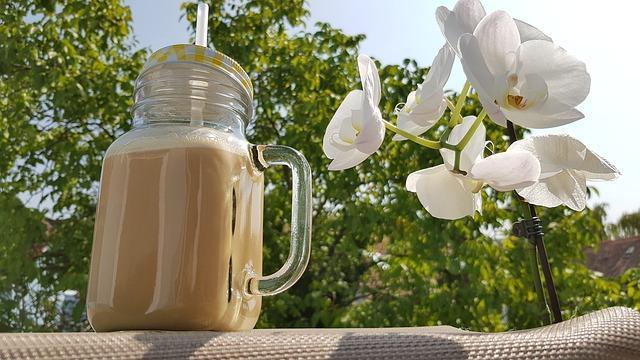
Preparation Time: 3 minutes
Ingredients Required
- Almond (soaked overnight) 4-6
- Milk: 1 Cup
- Sugar: 1 teaspoon
How to Prepare
Peel almonds. Grind them. Boil milk and add sugar and almond paste to it. Mix together and serve.
Recipe-15: Turmeric milk

Preparation Time: 3 minutes
Ingredients Required
- Milk: 1 Cup
- Sugar: 1 teaspoon
- Turmeric powder: a pinch
How to Prepare
Boil milk with sugar and turmeric powder. Serve the drink.
Recipe-16: Mixed fruit salad
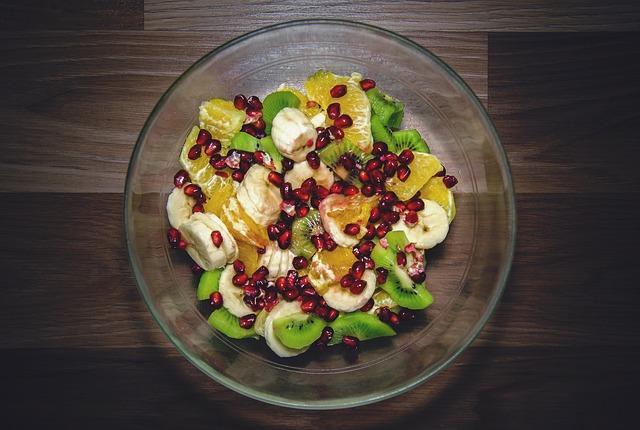
Preparation Time: 2 minutes
Ingredients Required
- Mango
- Banana
- Grapes
- Apples
- Watermelon
How to Prepare
Cut the fruits into slices and serve them together. Do not add any salt or sugar to it.
Frequently Asked Questions on foods for Covid patients
Q1. Why we should take home-made breakfast than depending on commercially available instant breakfast and snacks items?
What you are planning to take commercially available instant breakfast recipes if anyone of your family become a covid patient? You should not because it is always better to depend on home-made traditional breakfast and snack items instead of taking highly processed ready-to-eat instant breakfast recipes. Home-made recipes are –
- Easy to prepare
- Easy to digest
- Loaded with nutrients like protein and easily digestible carbohydrate
- Adequate probiotics and antioxidants can be supplied through judiciously planned breakfast and snacks.
- Freshly prepared traditional breakfast recipes contain much more amount of important vitamins (like vitamin-C, beta carotene, folic acid, vitamin-E) and minerals (like iron, calcium, potassium, magnesium, zinc etc.)
- Home made foods are free from-
- Added flavouring agents
- Artificial colours
- Preservatives.
- Traditional foods contain less amount of sugar and salt than commercially available breakfast and snack items. Moreover, you can reduce or avoid the use of sugar and salt in a specific recipe of a diabetic and / or hypertensive person.
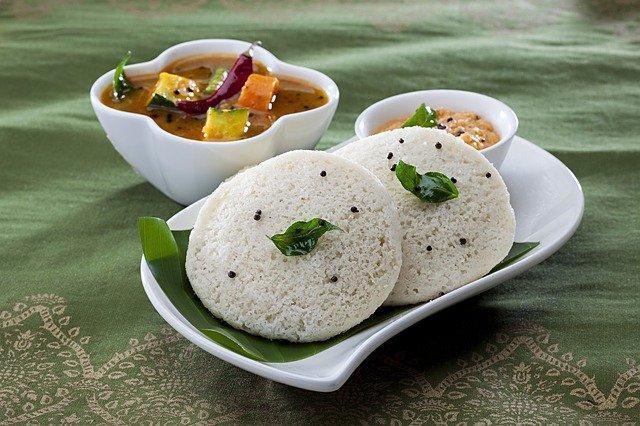
Q2. Is sugar okay to consume during isolation? What amount of sugar can be consumed by COVID-19 patients?
According to the World Health Organisation, the sugar intake of corona patients should be restricted to less than 5% of total energy intake. For adults maximum of 6 teaspoons of added sugar are suggested.
Q3. How to limit sugar intake during the COVID-19 quarantine?
You can limit your sugar intake by following 5 easy modifications to your daily diet.
- Reduce intake of sugar sweetened beverages like cold drinks, milk shakes, fruit juices and commercially available syrups.
- Replace commercially available summer drinks with home-made healthy summer drinks.
- Reduce preparation and intake of desserts and sweets.
- Reduce portion size of sweet foods.
- Reduce the use of sugar in your daily cooking.
Q4. What type of foods is to be selected for the breakfast and snacks of COVID-19 patients? Choice of foods for COVID-19 patients
Traditional home-made breakfast is always a healthier option than commercially available instant foods.
Intake of all types of processed foods and sugar sweetened beverages (like soft drinks, milk shakes and fruit juice available in the market.) should be restricted.
Table-1: Selection of foods
| What to take | Choice of foods |
| Cereals as a source of carbohydrate and second-class protein. Fermented rice products are good source of probiotics. | Rice flakes (churah), puffed rice (murmura or muri), popped rice (khoi), fermented rice products, oats, suji etc are preferred over millets (which are comparatively difficult to digest). |
| Pulses as a source of plant proteins and other nutrients | Any type of dal can be eaten but not in excess amounts because pulses are difficult to digest. |
| Milk and eggs are good sources of first-class protein. Fermented milk products (like curd, yoghurt and buttermilk) are an excellent source of probiotics. | One egg can be eaten in a day.Milk can be given in many forms like curd, yoghurt, chaas, channa, paneer, buttermilk, lassi, raita, milkshake, yoghurt etc. |
| Fruits and vegetables | The diet should be rich in easily digestible fruits and vegetables which are natural sources of vitamins, minerals and antioxidants. Fruits and vegetables that are difficult to digest (eg. Radish, cauliflower, cabbage etc.) should be avoided. |
| Butter, ghee and vegetable oil. | All fatty foods and fried foods should be avoided as they are difficult to digest.Minimum cooking oil should be used. |
| Sugar and salt | A minimum amount of sugar and salt should be used in cooking. |
Q5. What are foods to avoid during the COVID-19 pandemic?
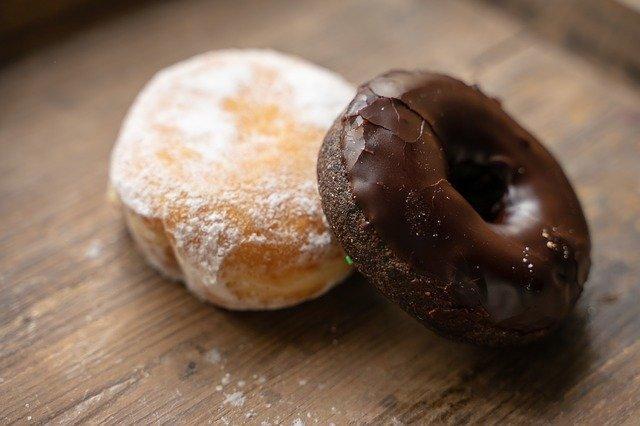
For maintaining good health and optimum immunity during the COVID-19 pandemic, we should avoid certain types of foods and reduce the intake of selected foods which are summarised in table-2.
Table-2: List of foods to be avoided and / or restricted during COVID-19 pandemic
| Foods to be avoided | Intake of foods to be restricted or limited |
| Fatty meats Hydrogenated oils Margarine Potato chips Salted peanuts Pizza pasties Soft drinks fruit juices available in the market Commercially available milk shakes Sweets and deserts Instant breakfast ready-to-eat meals Canned food alcoholic beverages | Doughnuts Biscuits Cookies Crackers Use of sugar and salt in cooking home-made sweets and desserts etc. Home-made cakes and pizzas Deep fried foods prepared at home. |
For more readings, click the followings
- https://www.google.com/search?q=covid+cases+in+india&rlz=1C1CHBF_enIN803IN804&oq=covid&aqs=chrome.4.0i131i433l5j69i60j69i61j69i60.6737j0j7&sourceid=chrome&ie=UTF-8
- https://link.springer.com/article/10.1007/s12648-020-01928-8
- https://www.who.int/vietnam/news/detail/14-07-2020-q-a-how-is-covid-19-transmitted#:~:text=Yes%2C%20infected%20people%20can,%2C%20receive%20medical%20care
- https://www.acpjournals.org/doi/abs/10.7326/M20-3012.
- https://www.thelancet.com/journals/eclinm/article/PIIS2589-5370(20)30461-2/fulltext
- https://www.unicef.org/coronavirus/easy-affordable-and-healthy-eating-tips-during-coronavirus-disease-covid-19-outbreak
- https://www.euro.who.int/en/health-topics/health-emergencies/coronavirus-covid-19/publications-and-technical-guidance/noncommunicable-diseases/food-and-nutrition-tips-during-self-quarantine#:~:text=Reduce%20foods%20such%20as%20red,which%20helps%20prevent%20overeating.
Summary
- In India and many other countries, a huge number of peoples are affected each day. Since in most cases, patients remain in home isolation for 2 weeks, modification of their breakfast and snacks is essential for them. The foods for covid patients should be modified in terms of consistency, quality, and quantity.
- Soft, semi-solid, nutritious foods should be given in small amounts at frequent intervals. Non-spicy, healthy breakfast and snacks should be prepared using protein-rich, high carbohydrate, low-fat foods using minimum salt, sugar, and cooking oil.
- Traditional, homemade breakfast and snacks are always preferred over commercially available instant food.
- All types of processed foods and sugar-sweetened beverages (like soft drinks, milkshakes, and fruit juice available in the market.) should be restricted.

